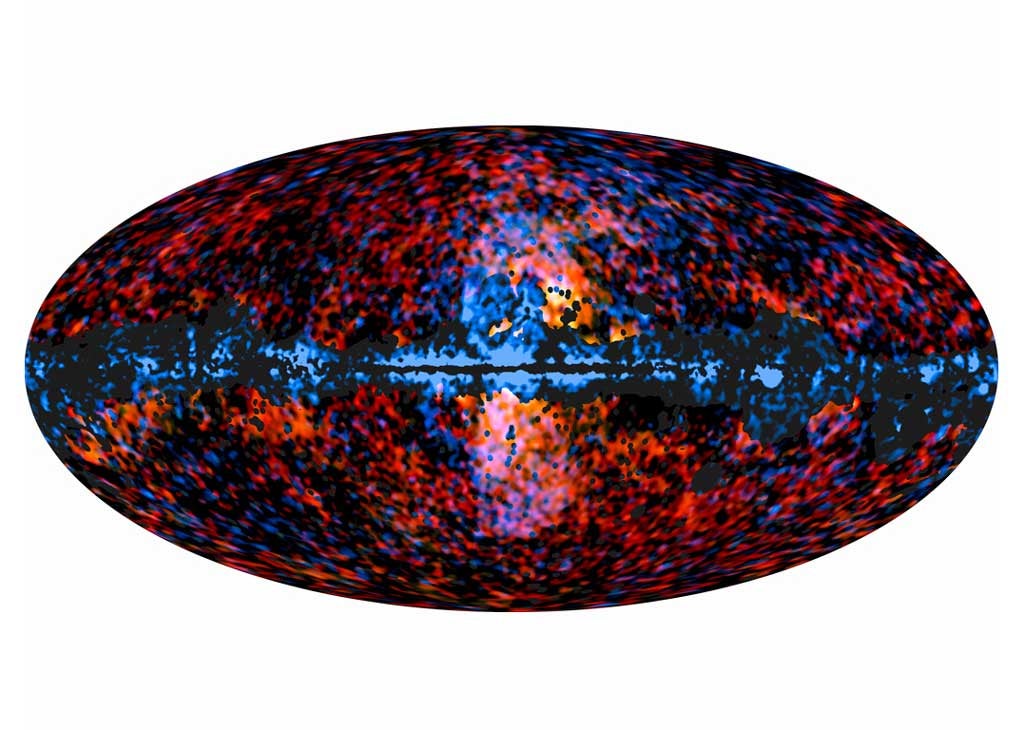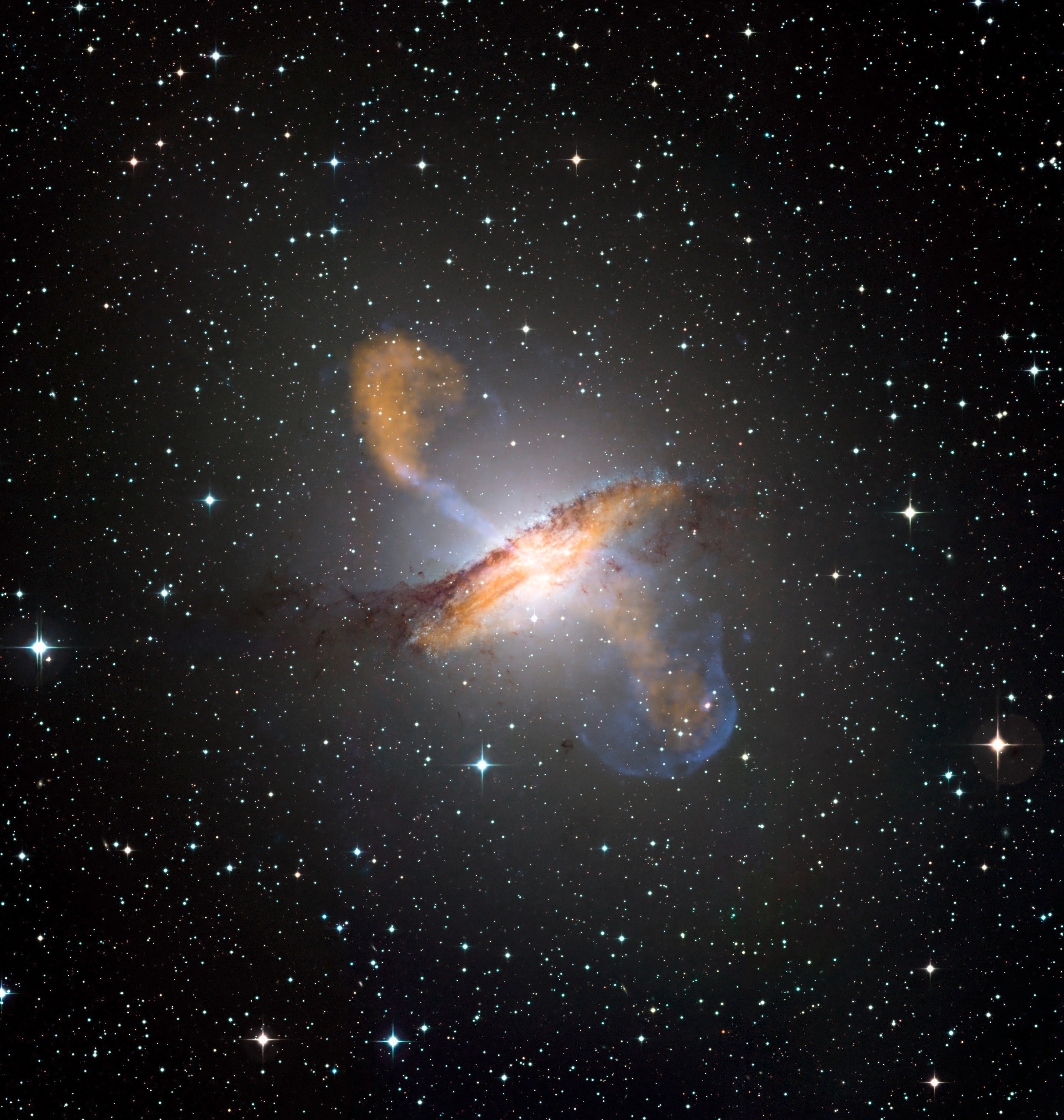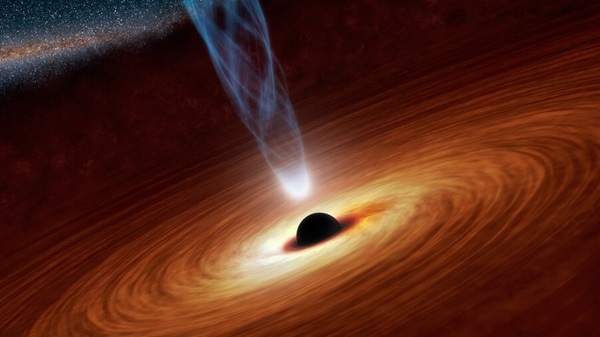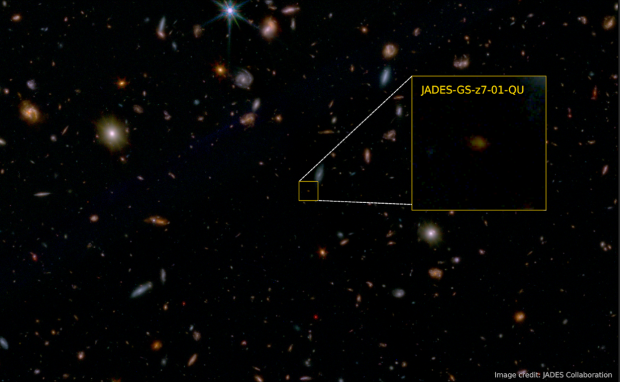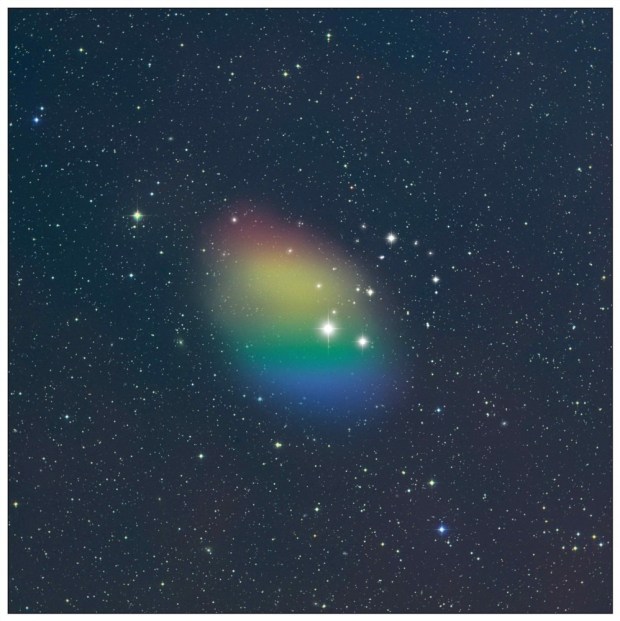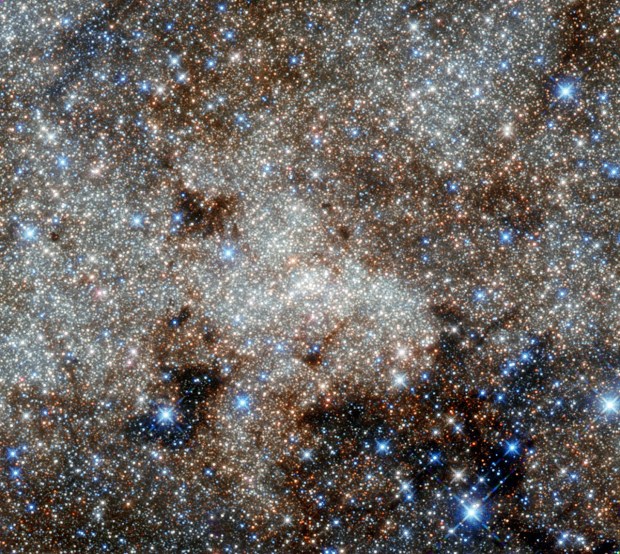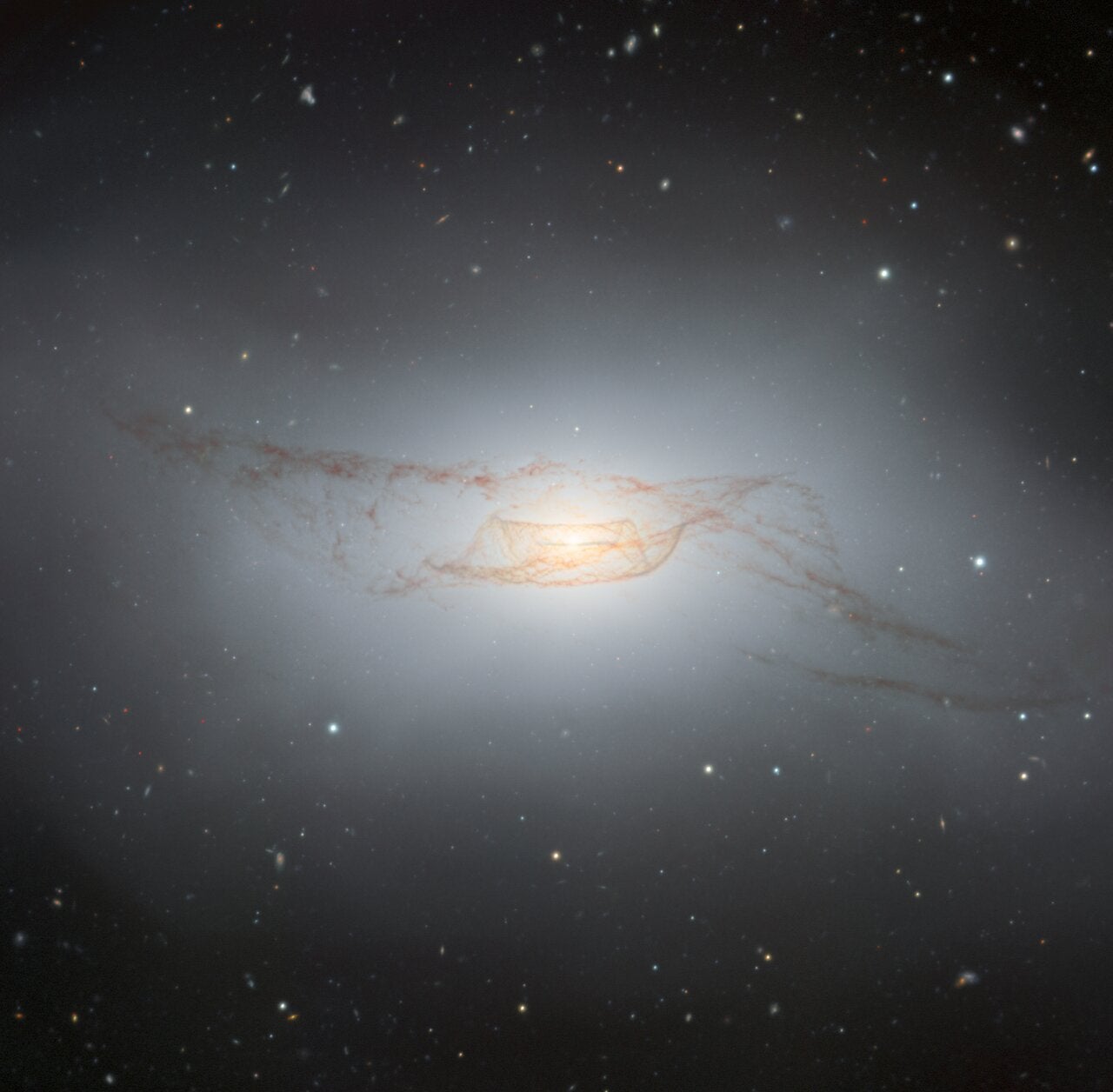A team of astronomers from Australia, the U.S., Italy, and The Netherlands recently made observations of the phenomenon, which correspond to the “Fermi Bubbles” found in 2010.
“There is an incredible amount of energy in the outflows,” said Lister Staveley-Smith from The University of Western Australia node of the International Center for Radio Astronomy Research in Perth and deputy director of the ARC Center of Excellence for All-sky Astrophysics (CAASTRO). “The source of the energy has been somewhat of a mystery, but we know there is a lot there, about a million times as much energy as a supernova explosion — a dying star.”
From top to bottom, the outflows extend 50,000 light-years out of the galactic plane. That’s equal to nearly half the diameter of our galaxy, which is 120,000 light-years.
“Our solar system is located approximately 30,000 light-years from the center of the Milky Way Galaxy, but we’re perfectly safe as the jets are moving in a different direction to us,” said Staveley-Smith.
Seen from Earth, but invisible to the human eye, the outflows stretch about two-thirds across the sky from horizon to horizon.
They match previously identified regions of gamma-ray emission detected with NASA’s Fermi Gamma-ray Space Telescope — then called “Fermi bubbles” — and the “haze” of microwave emission spotted by the Wilkinson Microwave Anisotropy Probe (WMAP) and Planck space observatory.
“Adding observations by the ground-based Parkes Radio Telescope to those made in the past by space telescopes finally allows us to understand how these enormous outflows are powered,” said Staveley-Smith.
Previously it was unclear whether it was quasar-like activity of our galaxy’s central supermassive black hole or star formation that kept injecting energy into the outflows.
The recent findings show that the phenomenon is driven by many generations of stars forming and exploding in the galactic center over the last hundred million years.
“We were able to analyze the magnetic energy content of the outflows and conclude that star formation must have happened in several bouts,” said Bryan Gaensler from CAASTRO.
Further analyses of the polarization properties and magnetic fields of the outflows can also help us answer one of astronomy’s big questions about our galaxy.
“We found that the outflows’ radiation is not homogenous, but that it actually reveals a high degree of structure, which we suspect is key to how the galaxy’s overall magnetic field is generated and maintained,” said Gaensler.
Ettore Carretti from CSIRO led the research.

